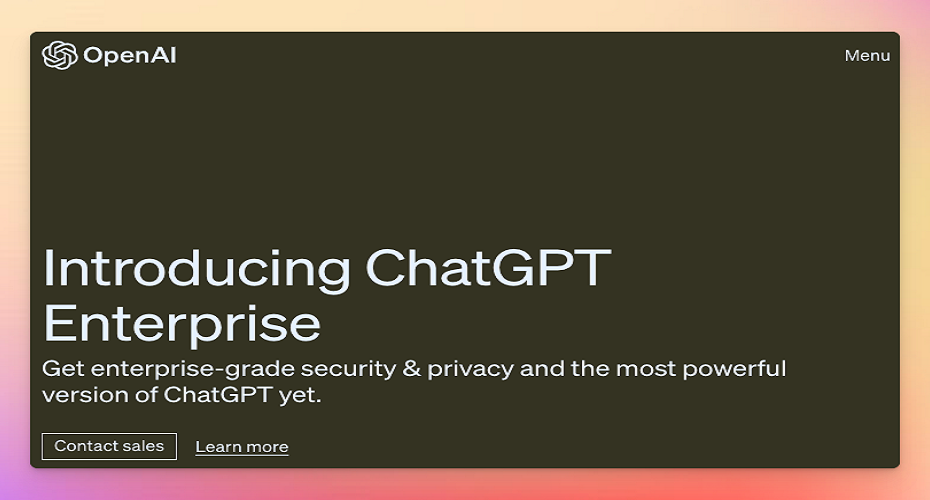Artificial intelligence promises to radically reshape business through automation. However eye-watering costs leave many leaders questioning whether benefits outweigh potential investment needed to tap into cutting-edge capabilities.
ChatGPT Enterprise sits at the vanguard – offering to overhaul customer service, marketing, and more through natural language processing. But as a premium solution, concrete details around pricing remain rare.
In this guide, we’ll break down everything decision makers need to know around cost implications of deploying ChatGPT Enterprise – bringing transparency to the financial considerations at play.
Security and Privacy – Table Stakes or Premium Features?
First, let’s explore how ChatGPT Enterprise prioritizes data integrity via robust security measures. As AI model sophistication has rapidly matured, so too have risks around data leakage and model manipulation.
ChatGPT Enterprise looks to mitigate such concerns through stringent safeguards like encryption, access controls, and SOC 2 auditing. Together, these place customer data protection on par with top cloud software vendors.
But should sound security be considered table stakes, or premium features? On one hand, enterprises expect certified confidential computing for any business-critical application today. However, measures like differential privacy and federated learning add layers of complexity to distribute systems – carrying real financial overhead.
How might security objectives affect pricing? While absolute rates remain closely-held secrets, we can reasonably assume that guarantees like end-to-end encryption and role-based access drive up costs.
For risk-conscious enterprises however, extra peace of mind often warrants budget insurance. Indeed, according to recent surveys, 57% of IT leaders ranked data security as the top factor in AI adoption. As threats persist, we can expect customers to pay premiums for protection.
Rather than advertise transparent SaaS rates, ChatGPT Enterprise relies on opaque “contact sales” approach, allowing custom quotes based on needs around number of users, response guarantees, and other dimensions.
But benchmarking peers gives clues into how volume-based tiers may be structured:
| NLP API | Free Tier | Mid Tier | Top Tier |
|---|---|---|---|
| Amazon Comprehend | 10K transactions/month | 100K transactions/month | 500K+ transactions/month |
| Google Cloud NLP | Free credit | $1/ thousand units | Volume discounts |
Here we see other managed NLP APIs price along usage volume bands. Free or discounted entry tiers enable product trial, mid volumes hit steady per unit rates, while highest traffic unlocks density savings.
Does ChatGPT Enterprise pricing likely follow suit? We expect so. Benchmarking reasonable industry pricing norms places hypothetical tiers for ChatGPT Enterprise along the lines of:
- Tier 1: ≤5K conversations @ $X monthly
- Tier 2: ≤30K conversations @ $Y monthly
- Tier 3: >30K conversations @ $Z monthly
Of course, all figures here are speculative. But directionally, adoption at scale would see enterprises graduating through volume tiers – where efficiency savings offset steeper total spend.
Pricing Powered by Knowledge Depth
So what factors set the rate per tier? Knowledge depth and comprehension play a key role. Wider domain mastery requires exponentially more data and computing power during model development.
In the case of ChatGPT Enterprise, upgrading architectures from GPT-3 to GPT-4 brought major leaps in conversational ability. But the 350GB of data and gnarly 175 billion parameters needed likely racked up eye-watering infrastructure bills.
In economic terms, knowledge depth demonstrates strong fixed costs yet weak marginal costs. This means while base rates seem exorbitant for light usage, at scale pricing becomes attractive – as value captured dwarfs incremental hosting fees.
Indeed, GPT-3 costs pegged at ~$12M factor largely R&D and R&D rather than ongoing inference. This is evidenced by API access prices dipping from $0.06 per 1k tokens to $0.003 as adoption rose.
So while opaque today, as natural language models continue maturing at breakneck speed, keep an eye out for downward movement in ChatGPT Enterprise rates too!
The Bottom Line
ChatGPT Enterprise offers tremendous potential to transform enterprise efficiency through AI-powered communication. However, as an elite professional-grade product, many rightfully balk at the premium price tag.
By reviewing analogous offerings and considering underlying economic drivers however, we can model reasonable expectations around cost structures. We see security and knowledge depth contributing to expenses, while scale and maturity promise eventual savings.
For enterprises plotting their AI journey, such informed projections help weigh investment priorities. Of course, exact rates remain closely guarded secrets. But unpacking the method behind OpenAI’s madness brings much needed perspective to evaluate spending trade-offs as we step firmly into the era of thinking machines.
